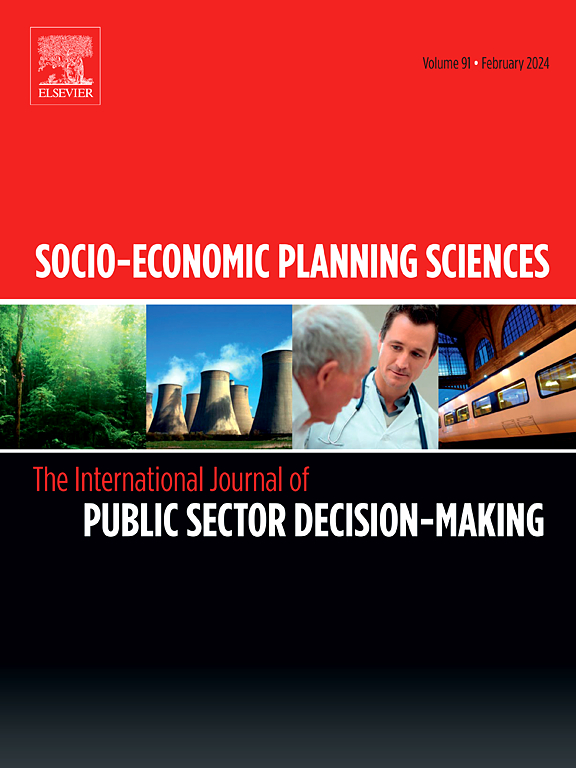Promoting safe and pro-environmental behaviors for sustainable forest management: Integrating technology acceptance model and the norm activation model
IF 6.2
2区 经济学
Q1 ECONOMICS
引用次数: 0
Abstract
In recent decades, Iran's forest resources have faced severe threats due to overexploitation. This study aims to identify key factors influencing stakeholders' intentions to adopt forest conservation behaviors, utilizing a hybrid framework that combines the Technology Acceptance Model (TAM) and the Norm Activation Model (NAM). A survey-based methodology, supported by a questionnaire and analyzed using Structural Equation Modeling (SEM), was employed. The study focused on rural households living in or near the Arasbaran forests of northwestern Iran. Results indicate that the integration of TAM and NAM provides valuable insights into sustainable forest management by addressing both functional and normative motivations. The proposed framework explained 66.4 % of the variance in rural households' intentions to engage in conservation behaviors. Notably, awareness of the consequences of forest conservation emerged as the most significant predictor. These findings suggest that policymakers should prioritize raising awareness about the impacts of forest preservation to foster environmentally responsible behavior and mitigate resource depletion.
促进可持续森林管理的安全和亲环境行为:整合技术接受模型和规范激活模型
近几十年来,由于过度开发,伊朗的森林资源面临严重威胁。本研究旨在利用技术接受模型(TAM)和规范激活模型(NAM)相结合的混合框架,找出影响利益相关者采取森林保护行为意愿的关键因素。本研究采用问卷调查法和结构方程模型(SEM)进行分析。这项研究的重点是居住在伊朗西北部阿拉斯巴兰森林或附近的农村家庭。结果表明,TAM和NAM的整合通过解决功能和规范动机,为可持续森林管理提供了有价值的见解。该框架解释了66.4%的农户参与环保行为意愿差异。值得注意的是,对森林保护后果的认识成为最重要的预测因素。这些发现表明,决策者应优先提高对森林保护影响的认识,以促进对环境负责的行为和减轻资源枯竭。
本文章由计算机程序翻译,如有差异,请以英文原文为准。
求助全文
约1分钟内获得全文
求助全文
来源期刊

Socio-economic Planning Sciences
OPERATIONS RESEARCH & MANAGEMENT SCIENCE-
CiteScore
9.40
自引率
13.10%
发文量
294
审稿时长
58 days
期刊介绍:
Studies directed toward the more effective utilization of existing resources, e.g. mathematical programming models of health care delivery systems with relevance to more effective program design; systems analysis of fire outbreaks and its relevance to the location of fire stations; statistical analysis of the efficiency of a developing country economy or industry.
Studies relating to the interaction of various segments of society and technology, e.g. the effects of government health policies on the utilization and design of hospital facilities; the relationship between housing density and the demands on public transportation or other service facilities: patterns and implications of urban development and air or water pollution.
Studies devoted to the anticipations of and response to future needs for social, health and other human services, e.g. the relationship between industrial growth and the development of educational resources in affected areas; investigation of future demands for material and child health resources in a developing country; design of effective recycling in an urban setting.
 求助内容:
求助内容: 应助结果提醒方式:
应助结果提醒方式:


